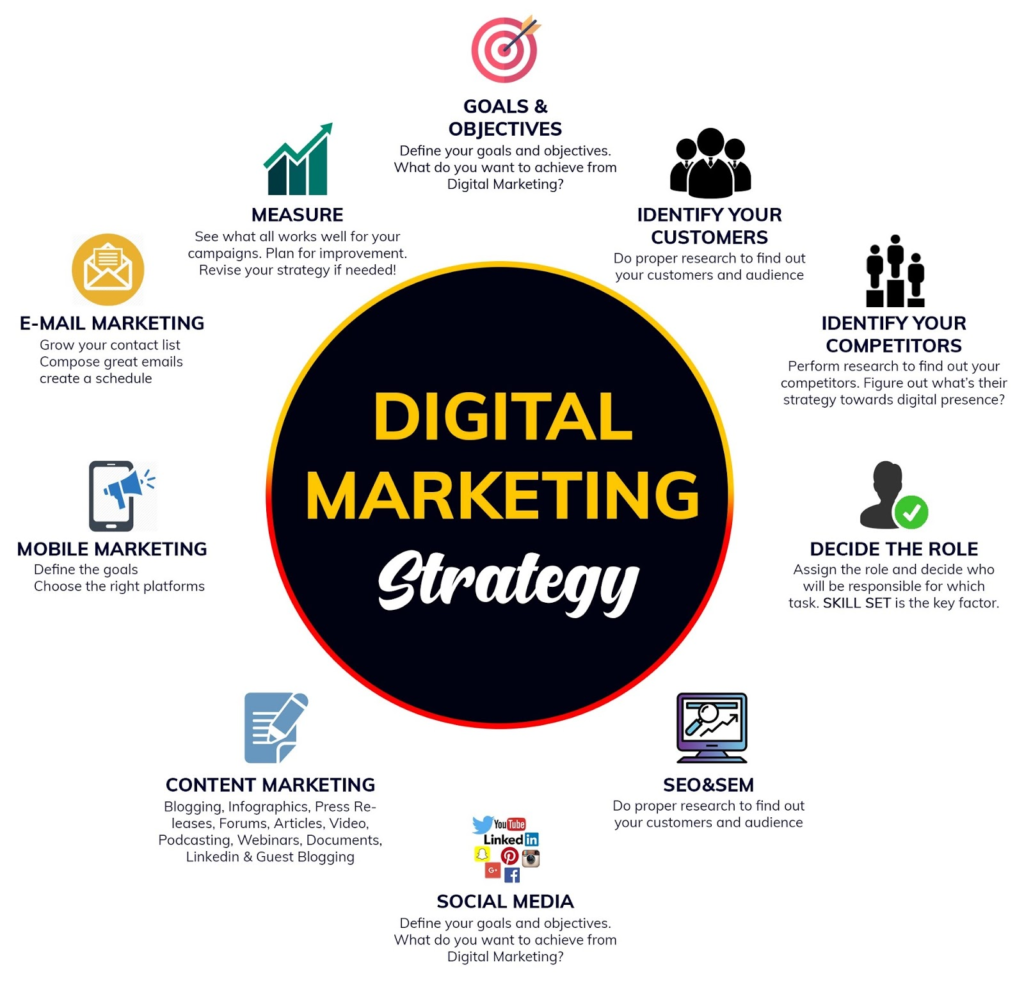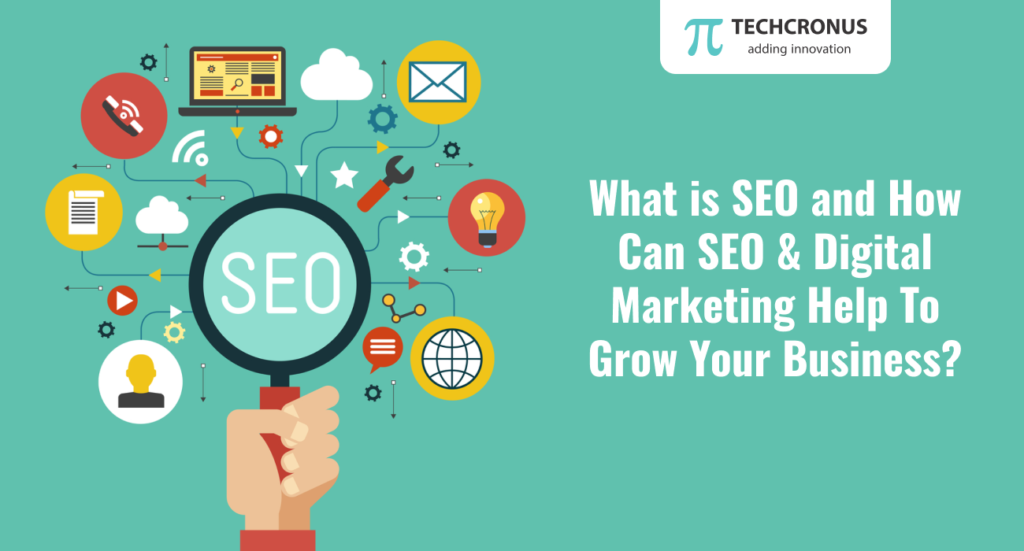EVOLUTION OF DIGITAL MARKETING
Indeed, the term “Digital Marketing” was first coined in the 1990s when the internet was gaining popularity, and businesses began exploring the possibilities of marketing their products and services online. During this time, the internet was primarily a one-way platform known as Web 1.0, where users could access information but had limited opportunities for interaction and sharing.
The Web 1.0 platform provided businesses with the ability to establish an online presence through websites, but marketers were still skeptical about the effectiveness of digital marketing strategies. The lack of widespread internet adoption and limited interactivity posed challenges and uncertainties for marketers. They were unsure if their traditional marketing approaches would translate effectively to the digital platform.
In 1993, the first clickable banner went live, after which HotWired purchased a few banner ads for their advertising. This marked the beginning of the transition to the digital era of marketing. Because of this gradual shift, the year 1994 saw new technologies enter the digital marketplace. The very same year, Yahoo was launched.
Yahoo, originally known as “Jerry’s Guide to the World Wide Web,” was founded by Jerry Yang and David Filo in 1994. It quickly gained popularity as a web directory and search engine, receiving nearly 1 million hits within its first year. Yahoo’s success and the increasing number of internet users prompted significant changes in the digital marketing space.
In 1996, several other search engines and tools were launched, further expanding the options available to internet users. HotBot, LookSmart, and Alexa were among the notable additions to the search engine landscape during that time.
The year 1998 marked a significant milestone in the evolution of search engines and digital marketing. Google was founded by Larry Page and Sergey Brin, and it quickly gained traction for its efficient and accurate search results. Google’s algorithmic approach to search, PageRank, revolutionized the search engine.

Not wanting to be left behind, Microsoft shifted its focus from MSN and launched Live Search, later rebranded as Bing, as a direct competitor to Google and Yahoo in the search engine market. This further intensified the competition and led to advancements in search engine technologies and algorithms.
These developments in the late 1990s and early 2000s set the stage for the dominance of Google as the leading search engine and laid the foundation for the digital marketing landscape we see today. Search engine optimization (SEO), pay-per-click (PPC) advertising, and other digital marketing strategies continue to evolve as businesses strive to capture the attention of the growing online audience.
June 2023HOW DO WE GET SUCCESS IN DIGITAL MARKETING
Achieving digital marketing success requires a well-rounded and strategic approach. While the specific tactics may vary depending on your business and industry, here are some key steps to help you achieve success in digital marketing:
- Define Clear Goals: Start by establishing clear and measurable goals for your digital marketing efforts. Whether it’s increasing website traffic, generating leads, improving brand awareness, or driving conversions, having specific goals will guide your strategies and help you track progress.
- Identify and Understand Your Target Audience: Invest time in researching and understanding your target audience. Define their demographics, interests, preferences, and online behavior. This knowledge will enable you to tailor your digital marketing efforts to effectively reach and engage with your ideal
- Develop a Comprehensive Strategy: Create a holistic digital marketing strategy that aligns with your goals and target audience. Consider incorporating various channels such as content marketing, social media marketing, search engine optimization (SEO), email marketing, paid advertising, and analytics. Your strategy should outline specific tactics, timelines, and allocated resources for each channel.
- Create Compelling and Relevant Content: Content is at the heart of digital marketing success. Develop valuable, relevant, and engaging content that speaks to your target audience’s needs and interests. This could include blog posts, videos, infographics, ebooks, and more. Consistently create and distribute content across multiple channels to build brand authority and nurture customer relationships.
- Optimize for Search Engines: Implement SEO best practices to improve your website’s visibility in search engine results. Conduct keyword research, optimize on-page elements, ensure mobile-friendliness, and build high-quality backlinks. A well-optimized website will attract organic traffic and increase your chances of being discovered by potential customers.
- Leverage Social Media: Utilize social media platforms strategically to connect with your audience, share valuable content, and build brand loyalty. Engage in conversations, respond to customer inquiries, and leverage paid advertising to reach a wider audience. Regularly monitor social media analytics to gain insights and refine your social media strategy.
- Leverage Social Media: Utilize social media platforms strategically to connect with your audience, share valuable content, and build brand loyalty. Engage in conversations, respond to customer inquiries, and leverage paid advertising to reach a wider audience.

How SEO helps DIGITAL MARKETING?

SEO (Search Engine Optimization) plays a crucial role in digital marketing by helping businesses improve their online visibility, increase organic traffic to their websites, and ultimately drive conversions and business growth. Here’s a human-like explanation of how SEO helps digital marketing:
SEO helps digital marketing by optimizing websites and digital content to achieve better rankings in search engine results pages (SERPs). When users search for relevant keywords or phrases related to a business, SEO ensures that the website appears prominently in the search results, increasing the likelihood of attracting clicks and visitors.
By implementing various SEO techniques, such as keyword research, on-page optimization, technical optimization, and link building, businesses can enhance their website’s visibility to search engines. This optimization process helps search engines understand the website’s content and relevance, making it more likely to appear in relevant search queries.
When a website ranks higher in search results, it gains more visibility and exposure to a wider audience. This increased visibility can lead to a significant boost in organic traffic, as users are more likely to click on the top results. SEO helps businesses target the right keywords and optimize their content to attract qualified traffic that is more likely to convert into customers.
Moreover, SEO contributes to the overall user experience of a website. Optimization efforts often involve improving site speed, mobile-friendliness, and overall website usability, making it easier for visitors to navigate and engage with the website. This positive user experience not only encourages longer on-site engagement but also increases the chances of visitors returning in the future.
REFERENCE BY: https://www.techcronus.com/blog/what-is-seo-digital-maketing
June 2023DIFFERENCE BETWEEN ONLINE MARKETING VS OFFLINE MARKETING
ONLINE MARKETING:
Overall, online marketing has become an essential component of modern business strategies, leveraging the internet and digital channels to effectively promote and expand businesses in the digital age.
The versatility and efficiency of online marketing enable businesses to tailor their strategies to specific demographics, measure campaign performance, and leverage real-time interactions with customers. This dynamic nature allows for continuous refinement and optimization of marketing efforts to achieve the desired results.
Additionally, mobile apps have become an increasingly powerful tool for businesses to engage with their customers and provide convenient access to their products or services.
SOME F THE EXAMPLES OF ONLINE MARKETING
1.Amazon
2.Yahoo
3.Filpkart
4.Twitter
5.Emails

OFFLINE MARKETING:
Offline marketing refers to the traditional methods used to promote a business, product, or service in the physical world, away from digital platforms. It encompasses a range of tactics and channels that have been used for decades to reach potential customers.
One key advantage of offline marketing is its ability to create tangible experiences. Customers can physically interact with products, see demonstrations, or receive samples. This hands-on approach can leave a lasting impression and generate word-of-mouth referrals.
Overall, offline marketing tactics work in synergy with online strategies to create a comprehensive marketing plan. By combining both online and offline methods, businesses can effectively reach a diverse audience and maximize their marketing efforts.
SOME OF THE EXAMPLES OF OFFLINE MARKETING :
1.Chats
2.Pamphelets
3.Radio
4.Wall paintings
5.Posters
June 2023TYPES OF DIGITAL MARKETING
There are so many types in digital marketing.Some of them are:
1.CONTENT MARKETING
Moreover, content marketing helps businesses stay top of mind when customers are ready to make a purchase. By consistently delivering valuable content, businesses can establish themselves as trusted authorities in their industry. When the audience is ready to buy a product or service related to the content they’ve consumed, they are more likely to turn to the business that provided them with valuable information.
- Businesses with blogs get 67% more leads than other companies.
- 72% of business to business (B2B) marketers say content marketing increases engagement and the number of leads they generate.
- 88% of people credit branded videos for convincing them to purchase a product or service.

2.SEARCH ENGINE OPTIMIZATION
SEO means Search Engine Optimization and is the process used to optimize a website’s technical configuration, content relevance and link popularity so its pages can become easily findable, more relevant and popular towards user search queries, and as a consequence, search engines rank them better.
Keyword research is an essential aspect of SEO, as it involves identifying the most relevant and popular search terms that users are likely to use when looking for information or products related to a business. By strategically incorporating these keywords into the website’s content, headings, titles, and metadata, SEO helps search engines understand the website’s relevance to specific search queries.
ROLE OF SEARCH ENGINE
- INFORMATION RETRIVAL
- CONTENT DISCOVERY
- TRAFFIC GENERATION
- BRAND EXPOSURE
- MOBILE FRIENDLY
- SECURITY
Information Retrieval: Search engines enable users to find relevant information quickly and efficiently. By entering keywords or queries into the search bar, users receive a list of results that match their search intent. Search engines employ complex algorithms to analyze websites and determine their relevance to the user’s query, providing the most accurate and useful results.
Content discovery: Search engines are instrumental in facilitating content discovery for users. By continuously crawling and indexing web pages, search engines make a wide range of online content accessible to users who are searching for specific topics or interests. This process involves systematically scanning websites, analyzing their content, and storing relevant information in their databases.
Traffic Generation: For businesses and website owners, search engines serve as a significant source of organic traffic. When a website ranks high in search engine results for relevant keywords, it attracts more visitors and potential customers. Optimizing a website’s content and structure for search engines (SEO) increases its visibility and enhances the chances of attracting targeted traffic.
Brand Exposure: Search engines contribute to brand exposure and awareness. When users repeatedly encounter a particular brand in search results, it reinforces the brand’s presence and familiarity. Higher search engine rankings can establish a brand as a trusted authority in its industry, leading to increased brand recognition and credibility.
Advertising Platform: Search engines also offer advertising platforms, such as Google Ads, where businesses can promote their products or services through paid search results. These advertising programs allow businesses to target specific keywords, demographics, and geographical locations, reaching potential customers at the moment they are actively searching for related offerings.
Mobile-Friendliness: With the growing prevalence of mobile devices, search engines recognize the significance of mobile-friendly websites. They prioritize mobile-responsive sites in search results to ensure that users have a smooth browsing experience on their smartphones and tablets. This consideration enables users to access relevant content regardless of the device they are using.
Security: Search engines prioritize the security of users’ online experience. They take into account factors such as website security certificates (HTTPS), protection against malware, and potential privacy risks when ranking search results. By favoring secure websites, search engines help protect users’ data and encourage a safer online environment.
3.SOCIAL MEDIA MARKETING:
Social media marketing means driving traffic and brand awareness by engaging people in discussion online. You can use social media marketing to highlight your brand, products, services, culture, and more. With billions of people spending their time engaging on social media platforms, focusing on social media marketing can be worthwhile.
- Brand Visibility and Awareness: Social media platforms offer a vast audience reach, allowing businesses to increase their brand visibility and create awareness among potential customers.
- Engaging Content Creation: Social media marketing involves crafting compelling content that resonates with the target audience. This can include a variety of formats such as text posts, images, videos, infographics, and interactive content. Engaging Content Creation: Social media marketing involves crafting compelling content that resonates with the target audience. This can include a variety of formats such as text posts, images, videos, infographics, and interactive content.
- Community Building and Customer Engagement: Social media platforms provide an opportunity to build a community of loyal followers and engage with customers directly. Through regular interactions, businesses can respond to customer queries, address concerns, and foster a sense of trust and loyalty.

4.PAPER PER CLICK MARKETING
PPC marketing provides businesses with a flexible and results-driven advertising approach. It offers the opportunity to reach a targeted audience, increase brand visibility, and drive traffic to websites or landing pages, ultimately contributing to business growth and success.
HERE SOME OF THE ASPECTS OF PAPER PER CLICK MARKETING
Ad Placement: PPC ads can be displayed on search engines like Google, Bing, or Yahoo, as well as on social media platforms and other websites. Advertisers can choose specific platforms and placements to target their desired audience effectively.
Keyword Targeting: PPC campaigns rely on selecting relevant keywords that align with the business offerings. Advertisers bid on these keywords, and when users search for those terms, the ads are displayed. Keyword research and selection play a crucial role in ensuring that ads are shown to the right audience.
Ad Auctions and Bidding: In PPC advertising, ad placements are often determined through auctions. Advertisers bid on keywords and compete with other advertisers who are targeting the same or similar keywords. Ad position and visibility are influenced by factors such as bid amount, ad quality, and relevance.
5.AFFILIATE MARKETING
Affiliate marketing is a performance-based marketing strategy in which businesses reward affiliates for each customer or visitor brought through their marketing efforts. It is a collaborative relationship between advertisers (businesses) and affiliates (publishers) where affiliates promote the products or services of the advertisers in exchange for a commission.

- Partnership and Commission Structure: Advertisers and affiliates enter into a partnership agreement, where affiliates promote the advertiser’s products or services on their websites, blogs, social media, or other platforms. Affiliates are compensated based on predefined commission structures, which can be a percentage of sales, a fixed amount per lead or click, or other agreed-upon metrics.
- Tracking and Attribution: To accurately measure the performance of affiliate marketing campaigns, tracking systems and unique affiliate links are used. These links contain a code or identifier that allows the advertiser to attribute conversions or actions back to specific affiliates. This tracking ensures that affiliates are credited for the customers or visitors they bring.
- Relationship Building: Affiliate marketing fosters relationships between advertisers and affiliates. Successful partnerships involve ongoing communication, support, and collaboration to optimize campaigns, share insights, and ensure mutual success. Building strong relationships with affiliates can lead to long-term partnerships and increased brand advocacy.
- Transparency and Compliance: Transparency is crucial in affiliate marketing. Advertisers need to provide affiliates with clear guidelines, branding assets, and compliance standards to maintain brand integrity. Affiliates should also disclose their affiliate relationships to their audience to maintain transparency and trust.
- Diverse Affiliate Models: There are various types of affiliate models, including content-based affiliates (bloggers, influencers), coupon and deal sites, comparison sites, loyalty and cashback platforms, and more. Each model utilizes different marketing strategies to drive traffic and generate conversions.
